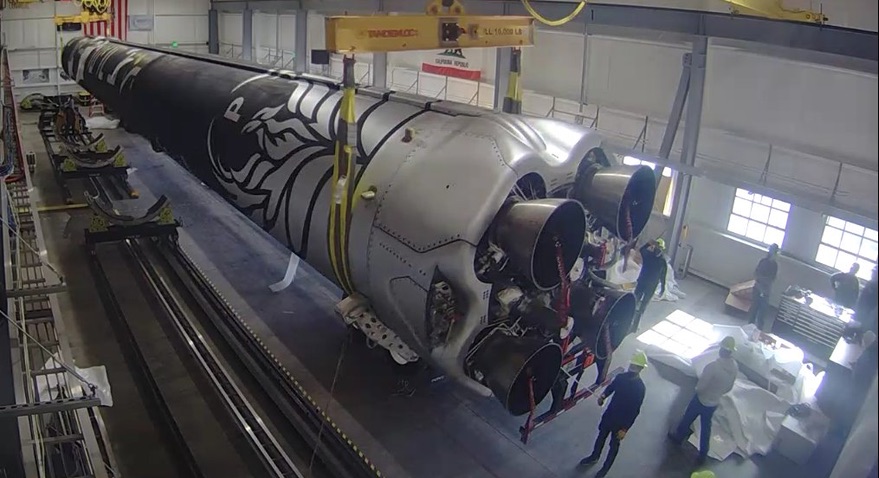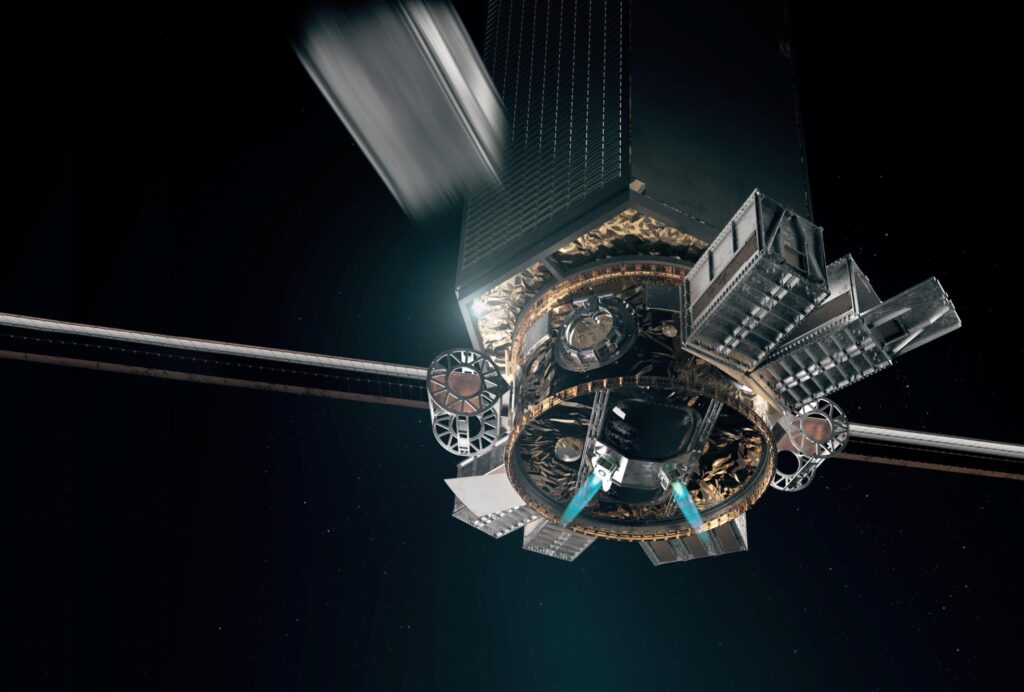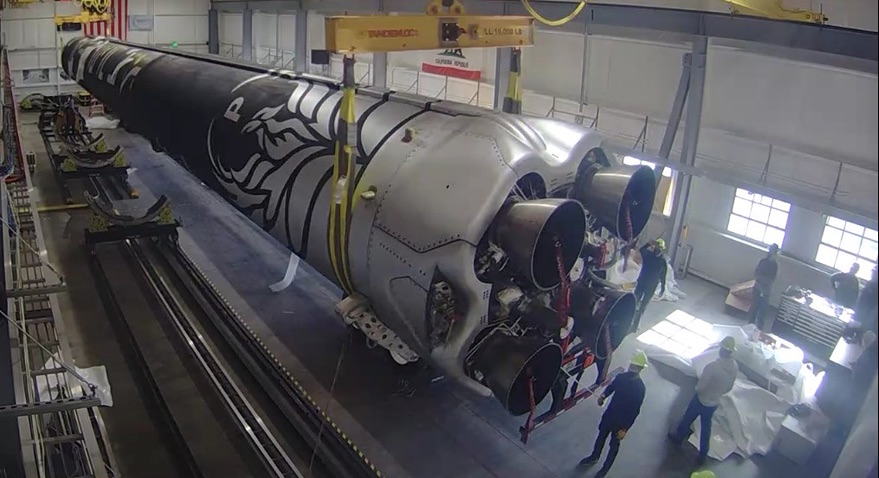
What Exactly Does Firefly Aerospace’s Space Utility Vehicle Do?
When launching satellites or other cargo into space, there are practically endless options and destinations you can head to. Majority of which is limited by different rockets and launch vehicles’ capabilities. Even when headed to an orbit around Earth, there are many options each providing different benefits along with challenges of getting there. Firefly Aerospace is working on a small-lift launch vehicle named Alpha along with a Space Utility Vehicle.
Firefly Aerospace’s Space Utility Vehicle or SUV is meant to expand its launch capabilities for different satellites and customers. Specifically, the Space Utility Vehicle is able to do this by orbit raising, plane changes, deorbiting, lunar orbit insertion, and more. All of which turns the Alpha rocket into a much more capable and impressive launch vehicle that also helps increase the private space company’s business and success.
Small-lift launch vehicles especially can benefit from this type of technology. By acting as a third stage of a vehicle and SUV can single-handedly make many missions possible that were not prior. It also manages to do this in a cost-effective and efficient way. Rather than build an additional launch vehicle or make large upgrades to a current model, the SUV acts as a good middle ground option for many within the space industry.
Firefly SUV Background

The Alpha launch vehicle by itself is capable of delivering 1000 kg to an altitude of 200 km. In order to achieve higher altitudes and greater mission flexibility, Firefly also offers an in-space vehicle, the space utility vehicle. This vehicle is a solar-electric third stage for not only Alpha but the Beta rocket as well. It provides in-space propulsion and can serve as a payload bus for missions lasting up to five years. In terms of dimensions, the SUV is not very big at 18 inches tall, 40 inches in diameter, and 130 kg of dry mass. In terms of capabilities, the SUV stands out. For missions exceeding 2000 km, the SUV delivers substantially more payload mass. Up to 600 kg can be delivered to GEO and up to 500 kg can be delivered to lunar orbit. Both of which are not possible for the Alpha launch vehicle by itself. In addition to acting as a third stage, the SUV provides uplink and downlink services, up to 2 KW of solar power, and more. Firefly Aerospace used carbon fiber as the primary material and ensured the Space Utility Vehicle was very resistant to radiation. The vehicle consists of a propellant tank, separation band, stowed payload, solar arrays, and 1 to 4 thrusters depending on the model and destination. Firefly even offers multiple variants of the SUV including the LEO Vehicle and the Extended-Range Vehicle.
Space Utility Vehicle Features

Orbit Raising – A good first example mission and feature of the SUV is its orbit raising capabilities. Whether launching from Cape Canaveral or Vandenburg Air Force Base, Firefly provides mission duration for different payload masses and power levels. These missions are assumed to begin at 400 km circular orbits. Firefly also points out that larger payloads are possible by beginning at lower altitudes, however, the drag at low altitudes makes lower power missions infeasible. Launching from Cape Canaveral shows Alpha taking 500 kg much higher than previously possible. The same goes for a Vandenberg Air Force Base launch, transfer to GEO, transfer to Lunar, and more.
Plane Changes – The next important feature of Firefly’s Space Utility Vehicle is its plane changes and constellation deployment. Firefly Aerospace provides an example mission showing trajectories of three 17 kg 12U CubeSats, each in a unique sun-synchronous orbit plane separated by approximately 60 degrees. Using the SUV, such a configuration is achievable in a single launch. At 2 kW, this mission can be accomplished in four months, a similar transfer time to an equivalent chemical propulsion mission. While the chemical propulsion is not possible from an Alpha launch vehicle, the electric propulsion version of this mission can both complete the CubeSat mission, and also deliver a 350 kg primary payload to offset mission cost. Looking at orbital phase changes, either for a single satellite or to deploy an array of satellites at unique relative positions is easily accomplished by the SUV. This typically happens in periods of 1 to 3 weeks per change of 90 degrees. An example of this could be where four 17 kg 12U CubeSats are deployed at 90-degree phase intervals at 500 km. This mission is accomplished with 400 W propulsion power within 1 month using less than 1 kg of propellant. Heavier payloads may be accommodated with longer transit durations or higher power levels.
Deorbiting – Another crucial feature of the Space Utility Vehicle is its deorbiting capabilities. Limiting space debris and removing any non-operational satellites from orbit is a very important process. NASA guidelines stipulate that all spacecraft and rocket bodies deorbit within 25 years of the end of the mission. For missions with a perigee greater than 500 km, aerodynamic drag alone is typically insufficient to deorbit a craft in that time span. The SUV however can deorbit satellites or rocket bodies. Firefly provides a figure showing a normal payload or craft taking around 50 months to deorbit using drag only. The SUV on the other hand uses thrusters and can deorbit from an altitude of 500 km in around 2 months only. Specifically, the SUV is shown to deorbit the second stage in 2.3 months at 400 W using only 12 kg of propellant.
Lunar Orbit Insertion – The last aspect of Firefly’s SUV I want to highlight has to do with lunar orbit insertion. The SUV is capable of delivering substantial payloads from an Alpha launch to low lunar orbit or beyond. An example mission provided by Firefly shows a lunar mission powered by a 5 kW solar array, beginning at 200 km LEO. The SUV gradually increases altitude, spiraling out to lunar orbit over a 5-month duration. Because the orbit is approximately circular, only a minimal lunar orbit insertion maneuver is necessary. Once captured by the Moon’s gravity, the SUV can spiral down to near the lunar surface. Very high altitude missions such as the one I just mentioned typically require high power levels in order to deliver a significant payload mass in a reasonable time frame. For this same reason, the SUV is especially suited to missions that require high power at the destination orbit. For example, if a communications relay satellite is needed at the Moon, the solar array can power the propulsion system during transit to the Moon. Once the destination orbit is reached and the propulsion system is powered down, the solar array can be used to power the communications system.
Conclusion
Looking at Earth’s orbit or even just our solar system, there are practically endless options for delivering different satellites and payloads. Small lift launch vehicles such as Alpha is only capable by itself of lower altitudes and closer destinations. This has to do with the size, power, propellant, and more of the launch vehicle. However, technology such as the Space Utility Vehicle is capable of increasing the rocket’s capabilities. Specifically, Firefly’s SUV can help with orbit raising, plane changes, deorbiting, and lunar orbit insertion. All of which would not be possible without the help of the additional third stage or SUV. With Firefly continuing to work on Alpha testing and more, we will have to hope for its success and see the impact the Space Utility Vehicle has in the future.
